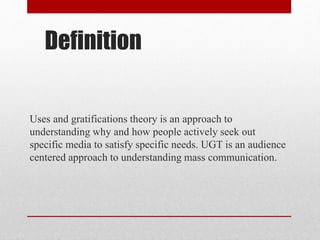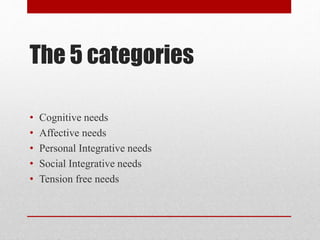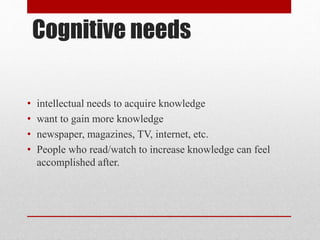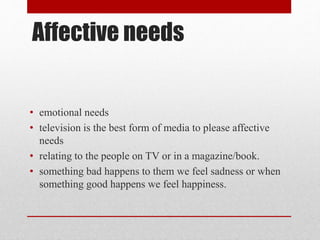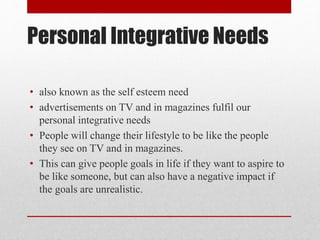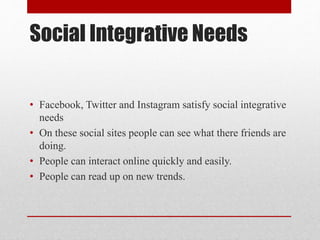Uses and gratifications media
- 2. Definition Uses and gratifications theory is an approach to understanding why and how people actively seek out specific media to satisfy specific needs. UGT is an audience centered approach to understanding mass communication.
- 3. The 5 categories âĒ Cognitive needs âĒ Affective needs âĒ Personal Integrative needs âĒ Social Integrative needs âĒ Tension free needs
- 4. Cognitive needs âĒ intellectual needs to acquire knowledge âĒ want to gain more knowledge âĒ newspaper, magazines, TV, internet, etc. âĒ People who read/watch to increase knowledge can feel accomplished after.
- 5. Affective needs âĒ emotional needs âĒ television is the best form of media to please affective needs âĒ relating to the people on TV or in a magazine/book. âĒ something bad happens to them we feel sadness or when something good happens we feel happiness.
- 6. Personal Integrative Needs âĒ also known as the self esteem need âĒ advertisements on TV and in magazines fulfil our personal integrative needs âĒ People will change their lifestyle to be like the people they see on TV and in magazines. âĒ This can give people goals in life if they want to aspire to be like someone, but can also have a negative impact if the goals are unrealistic.
- 7. Social Integrative Needs âĒ Facebook, Twitter and Instagram satisfy social integrative needs âĒ On these social sites people can see what there friends are doing. âĒ People can interact online quickly and easily. âĒ People can read up on new trends.
- 8. Tension Free Needs âĒ People use tension free needs as an outlet to escape from problems and everyday life. âĒ A person can relax while listening to their favourite song or artist or watching their favourite show. âĒ Good way to calm/wind down.

